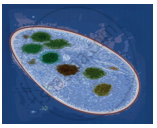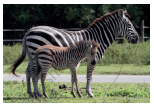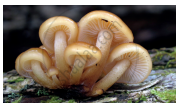Advertisements
Chapters
2: Electricity
3: Changes Around Us
4: Cell Biology
▶ 5: Basis of Classification
6: Digital Painting
![Samacheer Kalvi solutions for Science - Term 2 [English] Class 7 TN Board chapter 5 - Basis of Classification Samacheer Kalvi solutions for Science - Term 2 [English] Class 7 TN Board chapter 5 - Basis of Classification - Shaalaa.com](/images/science-term-2-english-class-7-tn-board_6:5f2b1b2038084cf381bfa42c826a928c.jpg)
Advertisements
Solutions for Chapter 5: Basis of Classification
Below listed, you can find solutions for Chapter 5 of Tamil Nadu Board of Secondary Education Samacheer Kalvi for Science - Term 2 [English] Class 7 TN Board.
Samacheer Kalvi solutions for Science - Term 2 [English] Class 7 TN Board 5 Basis of Classification Evaluation
Choose the correct answer.
The following characteristics are essential for classification.
Similarities
Differences
Both of them
None of them
Approximately ______ species of living organisms found in the earth.
8.7 million
8.6 million
8.5 million
8.8 million
The largest division of the living world is ______.
Order
Kingdom
PhylumFamily
Family
Who proposed the five kingdom of classification?
Aristotle
Linnaeus
Whittakar
Plato
The binomial name of pigeon is ______.
Homo sapiens
Rattus rattus
Mangifera indica
Columbo livia
Fill in the blanks.
______ in 1623, introduced the binomial nomenclature.
Species is the ______ unit of classification.
______ are non- green and nonphotosynthetic in nature.
The binomial name of onion is ______.
Carolus Linnaeus is known as the Father of ______.
True (or) False. If false write the correct answer.
Classification helps to know the origin and evolution of an organism
True
False
True (or) False. If false write the correct answer.
Fishes are aquatic vertebrates.
True
False
True (or) False. If false write the correct answer.
In the year 1979, Five kingdom classification was proposed.
True
False
True (or) False. If false write the correct answer.
True nucleus is seen in prokaryotic cell.
True
False
True (or) False. If false write the correct answer.
Animal cells have cell wall.
True
False
Match the following.
| 1. | Monera | Moulds |
| 2. | Protista | Bacteria |
| 3. | Fungi | Neem |
| 4. | Plantae | Butterfly |
| 5. | Animalia | Euglena |
Assertion and Reason Questions
Assertion: Binomial name is the universal name and contains two names.
Reason: It was first introduced by Carolus Linnaeus
Assertion is correct, Reasoning is correct
Assertion is correct, Reasoning is incorrect
Assertion is incorrect Reasoning is correct
Assertion and Reasoning are incorrect
Assertion: Identification, assortment and grouping are essential for classification
Reason: These are basic steps of taxonomy
Assertion is correct, Reasoning is correct
Assertion is correct, Reasoning is incorrect
Assertion is incorrect Reasoning is correct
Assertion & Reasoning is incorrect
Give very short answer
What is classification?
List out the five kingdoms classification
Define – dichotomous key
Write two examples of Monera.
What is binomial nomenclature?
Write the binomial name of
- Human being
- Paddy
Write two features of protista
Give short answer
Write the levels of classification.
Differentiate plantae and animalia
Write any two merits of Five Kingdom classification.
Give answer in Detail
Explain about five kingdom classification
Write short notes on – Binomial Nomenclature.
Give an account on the classification of invertebrates with few general features and examples.
HOTS
Which kingdom has saprophytic, parasitic and symbiotic nutrition. Why?
See the Diagram and write the kingdom :
Pictures of some living organisms are given below. Identify the kingdom to which each of these belong and write the kingdom name in the blanks provided.
| a. |  |
|
| b. |  |
|
| c. |  |
|
| d. |  |
|
| e. |  |
Solutions for 5: Basis of Classification
![Samacheer Kalvi solutions for Science - Term 2 [English] Class 7 TN Board chapter 5 - Basis of Classification Samacheer Kalvi solutions for Science - Term 2 [English] Class 7 TN Board chapter 5 - Basis of Classification - Shaalaa.com](/images/science-term-2-english-class-7-tn-board_6:5f2b1b2038084cf381bfa42c826a928c.jpg)
Samacheer Kalvi solutions for Science - Term 2 [English] Class 7 TN Board chapter 5 - Basis of Classification
Shaalaa.com has the Tamil Nadu Board of Secondary Education Mathematics Science - Term 2 [English] Class 7 TN Board Tamil Nadu Board of Secondary Education solutions in a manner that help students grasp basic concepts better and faster. The detailed, step-by-step solutions will help you understand the concepts better and clarify any confusion. Samacheer Kalvi solutions for Mathematics Science - Term 2 [English] Class 7 TN Board Tamil Nadu Board of Secondary Education 5 (Basis of Classification) include all questions with answers and detailed explanations. This will clear students' doubts about questions and improve their application skills while preparing for board exams.
Further, we at Shaalaa.com provide such solutions so students can prepare for written exams. Samacheer Kalvi textbook solutions can be a core help for self-study and provide excellent self-help guidance for students.
Concepts covered in Science - Term 2 [English] Class 7 TN Board chapter 5 Basis of Classification are Biodiversity, Biological Classification, Classification of Living Organisms, Taxonomic Hierarchy of Living Organisms: Unit of Classification, Five Kingdom Classification, Kingdom Protista, Kingdom Fungi, Kingdom Animalia, Kingdom Plantae: Thallophyta (Algae), Kingdom Monera, Classification of Kingdom Plantae, Division II- Bryophytes, New Criteria for Basis of Classification, Phylum: Cnidaria/Coelenterata, Phylum: Platyhelminthes, Invertebrate: Phylum Nematoda, Phylum: Aschelminthes, Phylum: Arthropoda, Phylum: Mollusca, Phylum: Echinodermata, Taxonomy and Systematics, Phylum: Porifera, Phylum: Annelida, Phylum: Hemichordata, Chordata: Vertebrata, Invertebrata and Vertebrata, Nomenclature, Phanerogams, Subphylum: Prochordata, Division III- Pteridophytes, Division I-Gymnosperms, Division II- Angiosperms.
Using Samacheer Kalvi Science - Term 2 [English] Class 7 TN Board solutions Basis of Classification exercise by students is an easy way to prepare for the exams, as they involve solutions arranged chapter-wise and also page-wise. The questions involved in Samacheer Kalvi Solutions are essential questions that can be asked in the final exam. Maximum Tamil Nadu Board of Secondary Education Science - Term 2 [English] Class 7 TN Board students prefer Samacheer Kalvi Textbook Solutions to score more in exams.
Get the free view of Chapter 5, Basis of Classification Science - Term 2 [English] Class 7 TN Board additional questions for Mathematics Science - Term 2 [English] Class 7 TN Board Tamil Nadu Board of Secondary Education, and you can use Shaalaa.com to keep it handy for your exam preparation.
